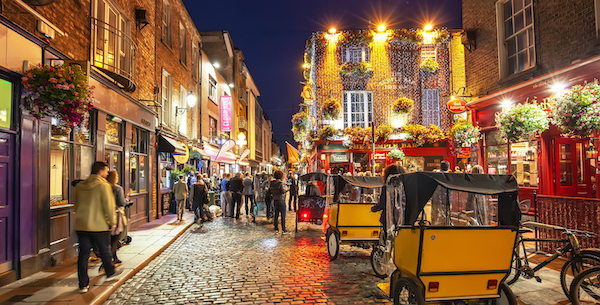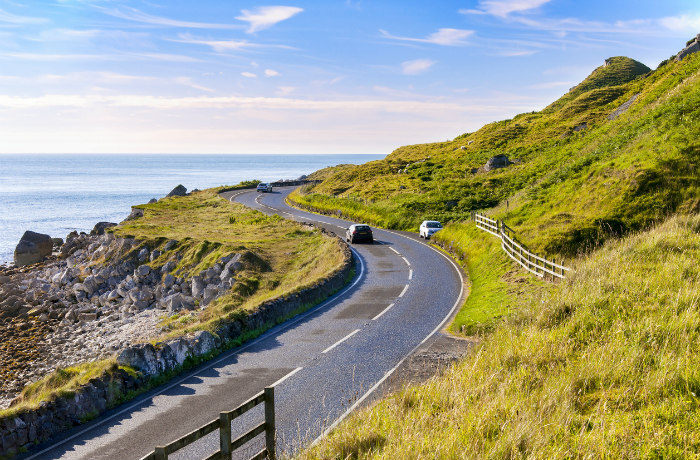From grand castles filled with elaborate furnishings to intimate pubs with live music, Ireland is a country of contrasts. Try to carve out time to explore Dublin (which is not hard to do, as most U.S.-originating flights land here) and the countryside destinations of County Kerry and County Clare (the latter of which is home to the Cliffs of Moher) for a broad understanding of Ireland’s culture. Even if you have just a long weekend to devote or can spring for a 10-day voyage, make the most of it by listening to folk music or browsing local markets for crafts and cuisine.
The Cliffs of Moher

Located in the County Clare region (in southwest Burren), these breathtaking cliffs soar above the Atlantic Ocean for about nine miles and attract 1.5 million visitors annually.
Guinness Storehouse

It’s true: a pint of Guinness beer in Dublin really does taste different (read: better) than the Guinness served in the U.S. Try for yourself on a brewery tour at Guinness Storehouse. On-site, there are two bars and four eateries, so you can sample authentic Irish cuisine, which pairs perfectly with your drink.
The Ring of Kerry

This area of Ireland is marked by a circular driving route that takes you through coastal areas as well as seaside villages. On average, the trip takes about three-and-a-half hours. We recommend packing comfortable walking shoes so you can pop out of the car to take in the incredible scenery (and, of course, to take pictures). If you love history, consider stopping at Skellig Michael, which was the site of an Irish monastery back in the sixth century.
Temple Bar

This Dublin neighborhood is the center of pub life with live music, casual dinners (with a pint of Guinness, of course), and a true slice of local living. It's also home to a pub of the same name.
Aran Islands

Most have heard of the Aran Islands — famous for its knitwear, including sweaters and scarves — but not many people actually visit them. The Aran Islands are located in the county of Galway and feature a UNESCO World Heritage Site (Dun Aonghasa) and a bucket-list-worthy glamping complex (Aran Islands Camping & Glamping on the island of Inis Mor).
Which Currency Does Ireland Use?
It’s important to know that Northern Ireland uses a different currency than the rest of Ireland, which uses the euro. This is convenient for travelers visiting more than one European country as, more and more, Europe is turning to the euro. In Northern Ireland, you will need pound sterling to pay for purchases or services. This is the same pound used in England, Wales, and Scotland.
Tipping in Ireland
Standard tipping on a restaurant, bar, or café bills is between ten to 15 percent of the total amount. If you receive outstanding service and truly want to reward the waitstaff, consider tacking on an additional five to ten percent.
Should I Drive in Ireland?
The first thing you need about driving in Ireland is that motorists drive on the left side of the road. Also, the streets are narrow and cars are tiny. However, one of the most charming ways to discover Ireland is by car — so just be sure to allow enough time to travel between towns (and be sure to build in time for some impromptu stops). So, what're you waiting for? Plan the ultimate Ireland road trip today.

Where to Stay in Dublin
During your Dublin stay, you’ll want to take full advantage of walking. That’s easy to do if you're staying in Temple Bar or City Center, or near Grafton Street. If you're looking for a more affordable option, consider making the Ballsbridge neighborhood your home base. Or, for a true bucket-list-worthy stay, check into one of the castle hotels near Dublin.
